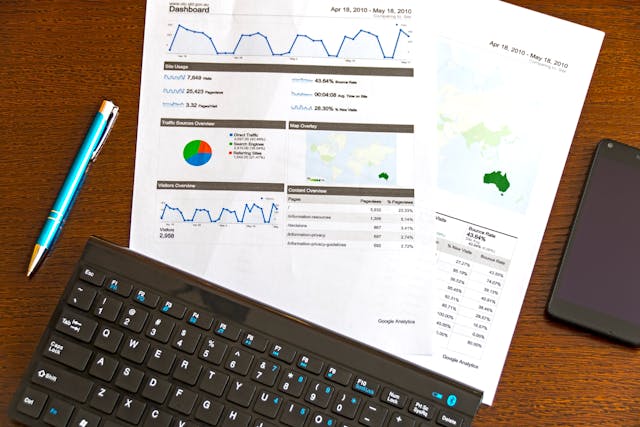In today’s digital advertising environment, effective budget pacing is critical. Spending too quickly leads to missed opportunities later in a campaign, while under-spending may leave valuable impressions on the table. A pacing dashboard serves as the control panel, enabling marketing professionals to keep campaign spending aligned with goals, minimizing waste, and maximizing reach.
Understanding What Pacing Means in Campaigns
Pacing refers to the speed at which your campaign budget is used over time. Picture a campaign budget as a fuel tank. The goal is to use that fuel efficiently, ensuring it lasts for the entire journey. Too fast, and you’ll run out before reaching the destination. Too slow, and you may not reach optimal engagement levels.

The dashboard’s role is to measure this fuel gauge constantly, identifying trends and potential over- or underspending. It serves as an early warning system, highlighting areas where campaigns deviate from expected spending patterns and allowing swift adjustments.
Key Metrics to Track on a Pacing Dashboard
An effective pacing dashboard centers on metrics that provide clear guidance on campaign health. These include daily spend, cumulative spend, target spend, and impression delivery. Balancing these metrics ensures the budget is used efficiently, delivering maximum value for each dollar spent.
Daily Spend provides a snapshot of how much is being spent each day and offers a quick indication of whether the campaign is on pace.
Cumulative Spend reveals the total amount spent to date, which should align closely with your projected spend for the same period.
Target Spend is the ideal amount to have spent by a certain date, typically calculated by dividing the total budget by the number of days in the campaign.
Impression Delivery shows the total impressions gained, helping ensure that campaigns not only stay on budget but also reach the desired audience.
Tracking these metrics continuously allows for a dynamic response, catching issues early and keeping everything on track.
Steps to Build an Effective Pacing Dashboard
Choosing the Right Tools
Selecting the right tools is a fundamental step. Google Sheets, Excel, and tools like Data Studio or Tableau offer versatile options depending on your comfort level and data needs. Google Sheets and Excel provide flexibility for custom formulas, making them suitable for marketers comfortable with spreadsheets. For more visual dashboards with interactive features, Tableau and Data Studio bring data to life, making trends easier to spot.
Pulling in Data Automatically
Setting up your pacing dashboard with automatic data pulls reduces manual errors and saves time. Many platforms, such as Google Ads and Facebook Ads, allow automated data exports to Sheets or direct API connections to Data Studio and Tableau. API integrations not only save time but also ensure that your data stays updated in real-time, providing a current snapshot of campaign pacing.
Setting Baseline Calculations
Building calculations for your pacing metrics sets the foundation for meaningful insights. In Google Sheets or Excel, setting up baseline calculations involves creating formulas for daily budget allocations, cumulative spending, and impression goals. For instance, dividing the total budget by campaign days gives the daily pacing goal. This baseline helps compare the daily spend and actual cumulative spend against the ideal trajectory, showing where the campaign stands.
Building Alerts for Pacing Irregularities
Alerts are essential for a dashboard that runs smoothly without constant monitoring. Implement conditional formatting in Sheets or Excel to highlight rows that go over or under a set threshold. In tools like Data Studio or Tableau, use color-coded visualizations to signal pacing issues visually. For example, a traffic light system (green for on track, yellow for minor deviation, red for major issues) allows at-a-glance monitoring. Regular alerts help catch issues early and prevent drastic last-minute adjustments.
Creating a Visualization for Budget vs. Spend
Visual representations, such as line charts or progress bars, make pacing data easy to interpret. For instance, plotting cumulative spend against target spend over time provides an immediate view of whether the campaign is on track. Another visualization option is a “burn-down” chart, which shows how much budget remains relative to the timeline, helping marketers gauge if spending needs to speed up or slow down to hit targets.
Tracking Conversion Metrics Alongside Spend
While keeping an eye on the budget is critical, ensuring that budget translates to results is equally important. Adding conversion tracking to your dashboard offers insights into whether the campaign is delivering value. For campaigns that aren’t meeting conversion targets despite staying on budget, consider revisiting audience targeting or adjusting creative elements. Conversion metrics, when viewed alongside pacing, reveal whether the budget is leading to desired outcomes or simply being spent without significant impact.
Evaluating Pacing Trends Over Time
Historical pacing data provides context that guides future strategies. Tracking pacing across multiple campaigns identifies patterns in spend velocity, helping to fine-tune future budgeting and pacing strategies. For example, if historical data shows that campaigns typically spend more heavily at the beginning or end, this trend can be factored into new campaigns, making the pacing dashboard even more reliable.
Adapting to Seasonal Shifts in Campaign Performance
Campaign performance often shifts due to seasonality, holidays, or changes in consumer behavior. Incorporating seasonal adjustments into your dashboard allows for more accurate pacing. For instance, if you anticipate higher engagement around a holiday, your dashboard should reflect a more aggressive pacing goal during this period. Adjusting for these factors ensures that campaigns align with audience behavior and maximize engagement when attention is high.
Regularly Reviewing and Updating Your Dashboard
A pacing dashboard should evolve along with campaign strategies and goals. Regular reviews help ensure the dashboard remains a valuable tool rather than just another report. At the end of each campaign, take time to assess the dashboard’s effectiveness, noting any adjustments that could improve accuracy or ease of use. Regular updates to the dashboard ensure it remains relevant and continues delivering insights that drive campaign success.
Common Pacing Challenges and How to Address Them
Even with a well-constructed dashboard, pacing issues can arise. Unplanned events, unexpected engagement spikes, or platform outages can all disrupt pacing. Addressing these challenges means building flexibility into the dashboard. When platforms go down, adjusting pacing immediately by reallocating budget across different channels can help. Tracking engagement and campaign performance daily rather than weekly makes it easier to handle unexpected changes and maintain the desired pacing.
Benefits of a Pacing Dashboard Beyond Budget Tracking
A well-designed pacing dashboard not only manages spend but also enhances campaign efficiency. By providing real-time insights, it enables informed decision-making, optimizing campaign outcomes. Monitoring daily spend reveals trends, empowering marketers to make proactive changes, enhance audience targeting, or adjust creatives, resulting in better campaign performance and a more significant return on investment.

Moreover, a pacing dashboard acts as a transparency tool, enabling marketing teams to keep stakeholders informed. Regular updates from the dashboard give everyone on the team, from account managers to clients, confidence in campaign progress and insights into budget use. Clear visualization of budget pacing reassures clients that funds are being managed responsibly, building trust and credibility.
Building Long-Term Success Through Pacing Insights
The process of building a pacing dashboard extends beyond one campaign. Each dashboard iteration teaches valuable lessons about spending patterns, audience behavior, and seasonal impacts, creating a knowledge base for future campaigns. As this knowledge grows, so does the ability to pace effectively, using insights to maximize the impact of every dollar.
While each campaign has unique goals, a pacing dashboard provides a strategic advantage that applies universally across campaign types. By establishing clear pacing metrics, building intuitive visualizations, and incorporating flexibility for seasonal adjustments, marketers can ensure campaigns remain on track, effectively balancing spend with performance.